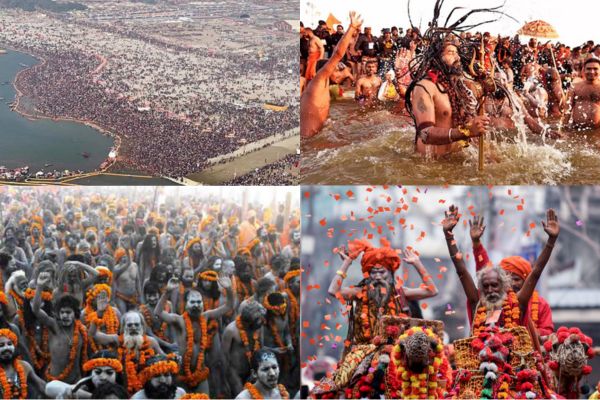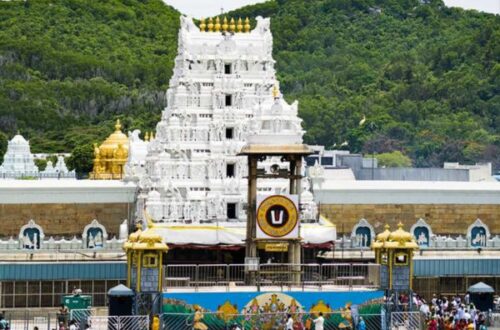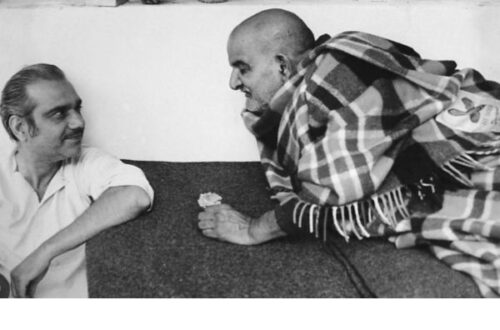
The Significance of Kumbh Mela: A Confluence of Faith and Culture
Kumbh Mela, one of the largest religious gatherings in the world, holds immense significance in Indian culture and spirituality. This grand event, which occurs every twelve years at four different locations in India, draws millions of devotees and tourists from around the globe. This blog post explores the profound religious, cultural, and social importance of Kumbh Mela, delving into its historical roots, rituals, and the vibrant tapestry it weaves in the fabric of Indian society.
Historical Background
Kumbh Mela’s origins can be traced back to ancient Hindu scriptures and mythology. The festival is rooted in the legend of the Samudra Manthan (churning of the ocean), where gods and demons fought for the pot of nectar (Amrit) that grants immortality. During the tussle, a few drops of nectar fell at four locations, which are now the sites of the Kumbh Mela.
Key Locations of Mahakumbh 2025
| Location | River | State |
|---|---|---|
| Prayagraj (Allahabad) | Confluence of Ganga, Yamuna, and Saraswati | Uttar Pradesh |
| Haridwar | Ganga | Uttarakhand |
| Ujjain | Shipra | Madhya Pradesh |
| Nashik | Godavari | Maharashtra |
These places hold special religious significance, attracting millions of pilgrims seeking spiritual cleansing and salvation.
Religious Significance
Kumbh Mela is considered one of the holiest pilgrimages in Hinduism. It is believed that taking a dip in the sacred rivers during the Kumbh Mela purifies the soul and absolves sins, leading to Moksha (liberation).
Key Rituals
- 🌪 Snan (Holy Dip): The primary ritual involves bathing in the sacred rivers to cleanse sins and attain spiritual merit.
- 💟 Satsangs and Pravachans: Spiritual discourses and gatherings led by saints and religious leaders provide guidance and enlightenment to devotees.
- 🕊 Aartis and Pujas: Devotional rituals performed on the riverbanks create an atmosphere of divine sanctity.
Bathing Dates of Mahakumbh Mela 2025
The upcoming Mahakumbh Mela in 2025 will be a significant event, with the following important bathing dates:
| Event | Bathing Date |
| Paush Poornima (Important Bathing) | 13 January 2025 |
| Makar Sankranti (Royal Bathing/Shahi Snan) | 14 January 2025 |
| Mauni Amavasya (Royal Bathing/Shahi Snan) | 29 January 2025 |
| Basant Panchami (Royal Bathing/Shahi Snan) | 3 February 2025 |
| Achla Saptami (Important Bathing) | 4 February 2025 |
| Maghi Poornima (Important Bathing) | 12 February 2025 |
| Maha Shivratri (Important Bathing) | 26 February 2025 |
Cultural Significance
Kumbh Mela is not just a religious event but also a cultural extravaganza. It serves as a melting pot of diverse traditions, showcasing the rich cultural heritage of India.
Cultural Highlights
| Aspect | Description |
|---|---|
| Traditional Music and Dance | Performances by folk artists reflect the cultural vibrancy of the region. |
| Handicrafts and Art | Artisans display and sell traditional crafts, promoting local craftsmanship. |
| Cuisine | A variety of regional foods offer a culinary delight to visitors. |
Social Significance
Kumbh Mela also plays a vital role in fostering social cohesion and unity. The festival transcends social and economic boundaries, bringing together people from all walks of life.
Social Impact
- 🌍 Community Building: The event fosters a sense of unity and collective identity among participants.
- 📚 Knowledge Exchange: Scholars, sages, and pilgrims engage in intellectual and spiritual discussions, promoting learning and growth.
- 💕 Charity and Service: Numerous charitable activities, such as free meals and medical services, are organized, reflecting the spirit of selfless service.
Environmental Significance
While Kumbh Mela is a celebration of faith, it also highlights the importance of river conservation and environmental sustainability. Efforts are made to ensure that the sacred rivers are kept clean and pollution-free.
Environmental Initiatives
| Initiative | Description |
|---|---|
| River Cleaning Drives | Campaigns to clean the rivers before, during, and after the event. |
| Waste Management | Proper disposal and recycling of waste to minimize environmental impact. |
| Eco-Friendly Practices | Use of biodegradable materials and promotion of sustainable practices. |
Interesting Facts About Kumbh Mela
- 👠 Largest Gathering: The 2013 Kumbh Mela in Prayagraj attracted over 30 million people in a single day, making it the largest human gathering on earth.
- 👾 UNESCO Recognition: In 2017, Kumbh Mela was inscribed on the UNESCO Representative List of the Intangible Cultural Heritage of Humanity.
- 📸 Technological Integration: The 2019 Kumbh Mela saw the use of drones, AI, and mobile apps for crowd management and safety.
- 🌊 Diverse Participation: People from all religions and nationalities participate, reflecting the event’s universal appeal.
FAQ Section for Mahakumbh Mela 2025
1. What is Mahakumbh Mela? Mahakumbh Mela is a major Hindu pilgrimage and festival that occurs every twelve years at four different locations in India. It is one of the largest religious gatherings in the world, where devotees take a holy dip in sacred rivers.
2. Where is Mahakumbh Mela 2025 being held? Mahakumbh Mela 2025 will primarily be held in Prayagraj (Allahabad), Uttar Pradesh, at the confluence of the Ganga, Yamuna, and Saraswati rivers.
3. What are the key dates for Mahakumbh Mela 2025? Key bathing dates for Mahakumbh Mela 2025 include:
- Paush Poornima: 13 January 2025
- Makar Sankranti: 14 January 2025
- Mauni Amavasya: 29 January 2025
- Basant Panchami: 3 February 2025
- Achla Saptami: 4 February 2025
- Maghi Poornima: 12 February 2025
- Maha Shivratri: 26 February 2025
4. How can I reach Prayagraj for Mahakumbh Mela? Prayagraj is well-connected by air, rail, and road. The nearest airport is Bamrauli Airport, and the city has a major railway station. Buses and taxis are also available from nearby cities.
5. What facilities are available for pilgrims? Facilities for pilgrims include temporary shelters, medical camps, clean drinking water, sanitation, and food stalls. The government and various organizations ensure that basic amenities are provided to all visitors.
6. Is there any entry fee for attending Mahakumbh Mela? No, there is no entry fee to attend Mahakumbh Mela. It is a free event open to all.
7. What precautions should I take while attending Mahakumbh Mela? Visitors should take precautions such as:
- Staying hydrated and wearing comfortable clothing.
- Keeping personal belongings secure.
- Following safety guidelines issued by authorities.
- Being mindful of the large crowds and maintaining personal hygiene.
8. Can international tourists attend Mahakumbh Mela? Yes, international tourists are welcome to attend Mahakumbh Mela. It is a global event that attracts visitors from around the world.
9. What is the significance of the holy dip? The holy dip in the sacred rivers during Mahakumbh Mela is believed to purify the soul, wash away sins, and help attain salvation (Moksha).
10. Are there any cultural programs during Mahakumbh Mela? Yes, Mahakumbh Mela features various cultural programs, including traditional music and dance performances, art exhibitions, and spiritual discourses, showcasing India’s rich cultural heritage.
Conclusion
Kumbh Mela is a spectacular manifestation of India’s spiritual ethos and cultural diversity. It serves as a powerful reminder of the enduring relevance of ancient traditions in the modern world. The festival not only reinforces the spiritual beliefs of millions but also fosters cultural exchange, social unity, and environmental awareness.
As Kumbh Mela continues to grow in scale and significance, it remains a beacon of faith, a celebration of life, and a testament to the enduring spirit of humanity.




